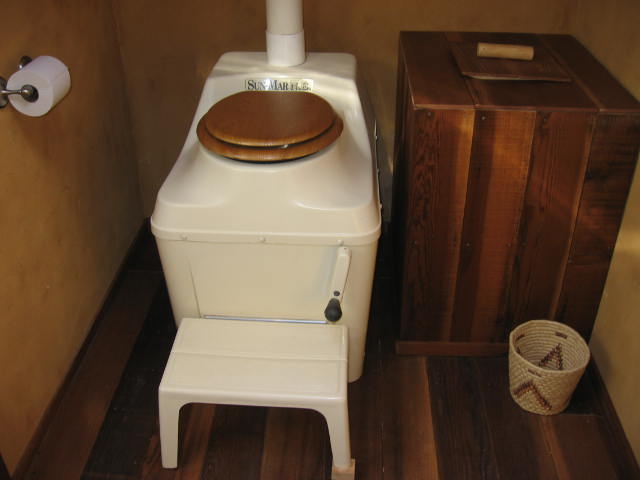Dry Toilets
A dry (composting) toilet is a treatment system for toilet wastes that does not use a conventional septic system. Dry toilets are thought to be first developed in Scandinavia where topsoil suitable for conventional septic systems was not available. The notion of composting waste in general has been around for thousands of years. A dry toilet is basically a warm, well-ventilated container with a diverse community of aerobic microbes living inside that break down the waste materials. The process creates a dry, fluffy, odorless compost, similar to what is in a well-maintained garden compost pile.
Dry toilets are NOT outhouses. The compost in a well-built chamber does not smell. Rapid aerobic decomposition – active composting – which takes place in the presence of oxygen, is the opposite of the slow, smelly process that takes place in an outhouse, which works by anaerobic decomposition.
A dry toilet has three basic elements; a place to sit, a well-vented composting chamber, and a bin supplying earth, sawdust, ashes or other high carbon-content bulking agents. This bulk soaks up excess moisture, makes lots of little wicks to aid in evaporation, and creates air passages that prevent anaerobic pockets from forming. The well cured compost is a potent fertilizer that can be used in gardens and/or for landscaping.
Guatemalan Toilets
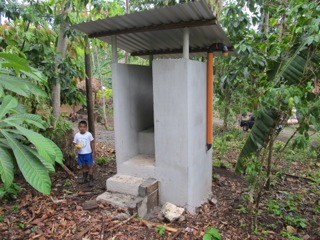
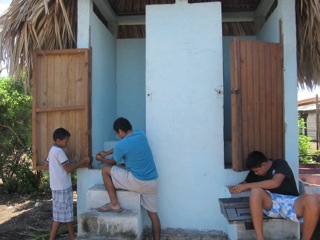
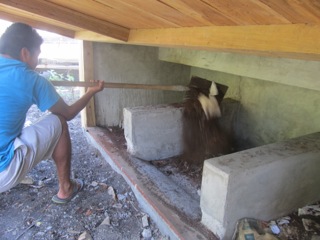
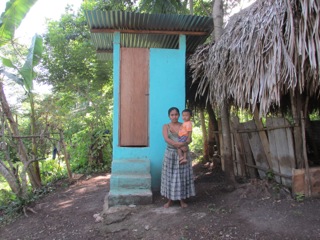
Over 400 dry toilets have been built in the jungles of Guatemala modeled after Sage Mountain Center designs. See our Latest News page for more details on this amazing project.


